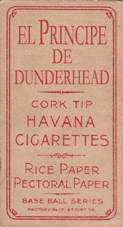Diamond Stars set
4 posters
Page 1 of 1
 Diamond Stars set
Diamond Stars set
As most know, I've changed the focus of my collection and the Diamond Star set if one three sets I've decided to focus on. I've always loved this set but knowledge is pretty limited beyond the basics. If anyone has any helpful hints as far as tough cards, history of the set, etc it would be greatly appreciated. I'm still not sure if I want to pursue a master set or not.
Jay
Jay
 Re: Diamond Stars set
Re: Diamond Stars set
I'm working on the set as well, but I probably can't help out much as I don't know the particulars all that well. The tough cards are the ones I still need  I'd bet you already knew everything below, but here goes anyway.
I'd bet you already knew everything below, but here goes anyway.
From my perspective, its pretty easy to see what the tough cards are by simply looking at the PSA pop reports. I don't mean tough as in PSA 8 tough, I mean tough as in mid-grade tough. Yes, yes, there is a lot of cracking, crossing ,etc. etc., and it can screw the meaning for a few cards...but overall the pop reports can still be useful. Heck, the pop report I use is over a year old, and I still think its useful. Stuff that's obvious to some who know the set, and can also be gleaned from the pop reports easily are: 1-24 and 96 and higher are tough, 25-83 are easy. Other issues: "Ernie" is probably a shade tougher than "Earnie" (the #36 card), but not by a great deal (to show they are both relatively easy, I have both). Greenburg is much tougher than Greenberg (I need the Burg). Backs: 1934 1-24, green back only. 1935 1-84 in green back, 73-84 in blue back...the blue backs are tougher. 1936 73-108 all blue backs, 96 and higher are tougher...also an assortment of low numbers in 1936 blue back, but the numbers are haphazard, not sequential. Low number (scattered, not sequential) 1936 blue backs are tough. You can tell the year by the year listed in the stats section on the back bottom (forget the copyright date). If it says "He hit .321 in 1934.", then it is a 1935 card. If it refers to 1935, then it is a 1936 card. Thee other variations: 2 Simmons with and without Sox (I believe the without is 1936 only), 7 Fonseca shows his year, 34 in 1934 card, 35 in 1935 card. 30 Manush with and without W, without W is 1936.
What I have may not fit your bill, but I have a few dupes for sale. If you haven't already seen them, PM me and I'll send you a link.
In case he's reading this, thanks to Paul for his help. I probably learned everything I know about Diamond Stars from him.
Hubbell and Hornsby look relaxed in this set.


From my perspective, its pretty easy to see what the tough cards are by simply looking at the PSA pop reports. I don't mean tough as in PSA 8 tough, I mean tough as in mid-grade tough. Yes, yes, there is a lot of cracking, crossing ,etc. etc., and it can screw the meaning for a few cards...but overall the pop reports can still be useful. Heck, the pop report I use is over a year old, and I still think its useful. Stuff that's obvious to some who know the set, and can also be gleaned from the pop reports easily are: 1-24 and 96 and higher are tough, 25-83 are easy. Other issues: "Ernie" is probably a shade tougher than "Earnie" (the #36 card), but not by a great deal (to show they are both relatively easy, I have both). Greenburg is much tougher than Greenberg (I need the Burg). Backs: 1934 1-24, green back only. 1935 1-84 in green back, 73-84 in blue back...the blue backs are tougher. 1936 73-108 all blue backs, 96 and higher are tougher...also an assortment of low numbers in 1936 blue back, but the numbers are haphazard, not sequential. Low number (scattered, not sequential) 1936 blue backs are tough. You can tell the year by the year listed in the stats section on the back bottom (forget the copyright date). If it says "He hit .321 in 1934.", then it is a 1935 card. If it refers to 1935, then it is a 1936 card. Thee other variations: 2 Simmons with and without Sox (I believe the without is 1936 only), 7 Fonseca shows his year, 34 in 1934 card, 35 in 1935 card. 30 Manush with and without W, without W is 1936.
What I have may not fit your bill, but I have a few dupes for sale. If you haven't already seen them, PM me and I'll send you a link.
In case he's reading this, thanks to Paul for his help. I probably learned everything I know about Diamond Stars from him.
Hubbell and Hornsby look relaxed in this set.


cmoking- All Star

- Posts : 228
Trader Points :



 Re: Diamond Stars set
Re: Diamond Stars set
Any post with info is a good post. I'm sure your dupes are way to nice and spendy for me. As is the norm for me, I look for presentable cards in lower grades. This can I can at least set the standard higher in that I won't take a card with a crease unless it's a high number. Surprisingly, even my Delong set is crease free. My t205 set isn't so nice I have cards with creases, holes and other major defects.
Jay
Jay
 Diamond Stars
Diamond Stars
Jay, just a note to let you know that we hope to run a comprehensive article on the set in the next issue (Issur #17) of Old Cardboard magazine. We will cover the set basics, variations, wrappers, original artwork, etc. and also plan to print a Gallery of the 108-card base set. If anyone has any little-known info on the set, please let us know asap. I hope the you enjoy the article. --Lyman
lhardem- Minor Leaguer

- Posts : 2
Trader Points :



 Re: Diamond Stars set
Re: Diamond Stars set
Hey King, thanks for that informative post. The Diamond Stars set is truly under appreciated, imo. The absence of Ruth/Gehrig does hurt it, but the color and design is second to none for that era. Just look at that Hubbell  nice choice for a set to work on, Jay.
nice choice for a set to work on, Jay.
ps welcome Lyman
 nice choice for a set to work on, Jay.
nice choice for a set to work on, Jay.ps welcome Lyman
 Re: Diamond Stars set
Re: Diamond Stars set
Well, you can tell my taste runs on garish side with my three set choices, DS, Delong and T205 
Jay
Jay
 Similar topics
Similar topics» Diamond Cut Cards
» For Sale: Diamond Stars
» Let's see some Catchers
» Set of the Week: 1934-36 R327 Diamond Stars
» 2013 Rosters and Ballpark
» For Sale: Diamond Stars
» Let's see some Catchers
» Set of the Week: 1934-36 R327 Diamond Stars
» 2013 Rosters and Ballpark
Page 1 of 1
Permissions in this forum:
You cannot reply to topics in this forum|
|
|



